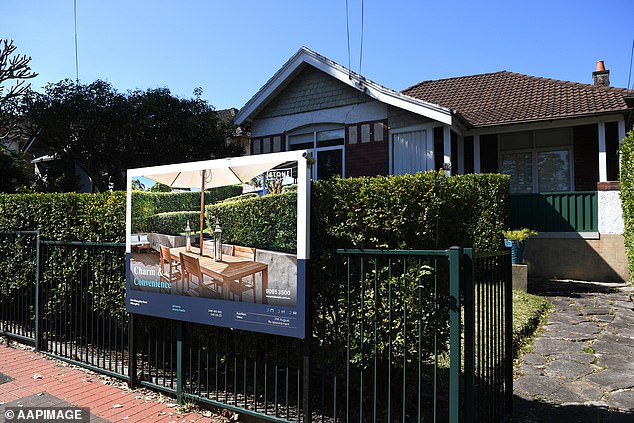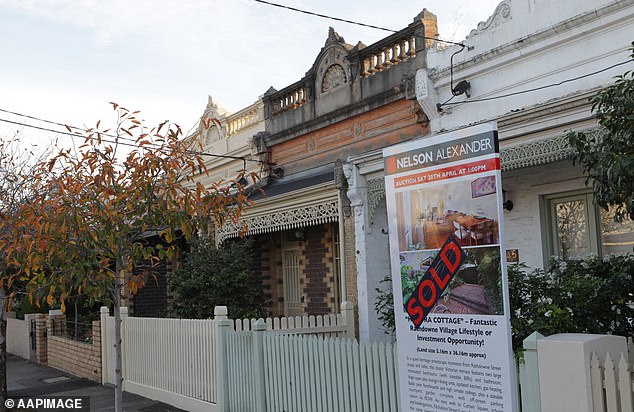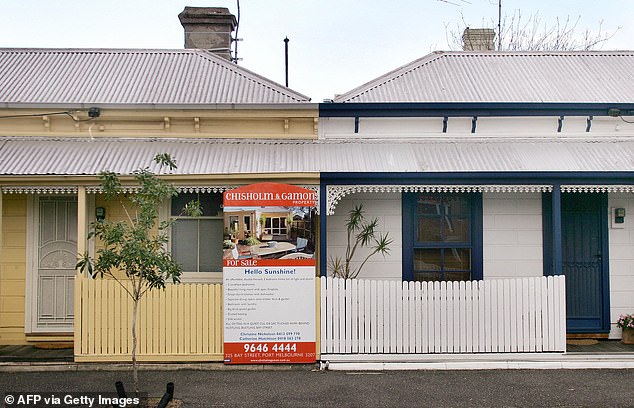Australia’s two largest cities are showing signs of a housing crisis amid widening gaps between incomes, borrowing capacity and home values, although prices continue to rise in some other cities.
House price growth in Australia is slowing, but an emerging slowdown will not solve serious housing affordability challenges.
Sydney and Melbourne are driving the decline, with values in Canberra and Hobart also falling, while growth continues at a slower pace in other Australian capitals and regions, according to analysis by property data firm CoreLogic.
“Even in the fastest growing markets like Perth, Brisbane and Adelaide, we are seeing the pace of growth slowing,” CoreLogic research director Eliza Owen told AAP.
Sydney and Melbourne have around 40 per cent of the country’s housing stock, accounting for around half of the total housing value across the country and greatly affecting value change.
When seasonally adjusted for the typically slower December period, national values rose slightly, but more homes have come on the market and have taken longer to sell.
Growth has been slowing since June, but values have risen steadily for 21 months, rising nearly 15 percent in the same period, and are unlikely to fall anywhere near that amount, Owen added.
“Housing market downturns tend to be shorter and less severe…this is unlikely to match the magnitude of the previous rebound.”
Sydney and Melbourne are driving the decline, with Canberra and Hobart values also declining. Pictured is a house for sale in South Melbourne.

Sydney and Melbourne have around 40 per cent of the country’s housing stock. Pictured is a house for sale in Sydney.
A cyclical downturn is also unlikely to solve current housing affordability challenges across the country, especially for low-income households and renters.
Signs of a slowdown reflect a slowdown in incomes and economic growth, while a discrepancy persists between what homes cost and what households can afford, Owen said.
‘Increasingly, our housing market has reflected that people are not just buying income and savings, but relying on having a higher income, having a really high deposit and getting help from the bank of mum and dad.
“But eventually, even that source of demand dries up, something has to give, and it looks like that concession is finally happening,” Owen said.
Supply issues also persist: Australian Bureau of Statistics data on Tuesday showed housing approvals fell, with fewer than 15,000 approved in November.
While the pace is expected to accelerate in 2025 and 2026, ongoing competition for labour, rising costs for builders amid high insolvencies and high interest rates still pose a challenge.
CreditorWatch chief economist Ivan Colhoun said lower inflation and a slowdown in population growth could lead to some interest rate cuts, but not as much as some might expect.
“The emerging rebound in housing approvals without any interest rate cuts is another reason to expect any interest rate easing cycle… to be relatively limited,” he said.

Australia’s two largest cities are showing signs of a housing crisis. A sold sign is seen in front of a house in Brunswick, Melbourne.
However, things are different in other parts of the country, with house prices in Queensland’s affordable regional cities expected to continue rising by double digits in 2025.
Propertyology research director Simon Pressley predicts double-digit booms in just nine of Australia’s 25 largest cities this year, defined as those with at least 100,000 residents.
Cities where house prices are still affordable or close to the beach are forecast to do particularly well, especially in northern Australia, which is prone to flooding and cyclones.
Pressley, a buyer’s agent, is particularly optimistic about Townsville, in northern Queensland, predicting increases of 25 to 30 per cent this year.
“The largest city in all of northern Australia will win the premiership of the national property market in 2025,” he said.
South Townsville is particularly affordable, with a median house price of $539,771, following a 24 per cent increase over the past year, according to CoreLogic data.
It is still achievable for someone with a 20 per cent mortgage deposit of $107,954 and a salary of $83,000.
Mackay, also in northern Queensland, was expected to see growth of 12 to 16 per cent.
“Investors from all corners of the country are also attracted to the above-average rental yields of Mackay property,” Pressley said.
South Mackay’s median house price of $462,902 remains very affordable and attainable for someone earning $71,216 even after prices rose 16.5 per cent over the past year.
Cairns, in far north Queensland, was expected to see growth of 7 to 11 per cent, considering the tropical city was home to a naval base, health and construction jobs, and was receiving an airport upgrade worth 80 million dollars.


